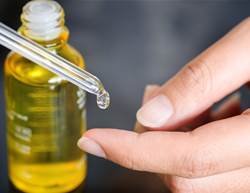We all know that wearing sunscreen is important, but what do we really know about it? With so much information swirling around, it can be head-spinning to know where to start when it comes to using and choosing the best SPF formulas (especially since a huge 80% of Australians aren't applying their sunscreen correctly, according to the Cancer Council Victoria.) Well, you can stop wondering now because your reintroduction to our favourite sun protection pal is here! Hold on to your hats and listen up — the experts have answered your most burning questions about sunscreen basics.
First, what's in sunscreen and how does it work?
Sunscreens are skincare products that contain active ingredients that protect skin cells from the sun's ultraviolet radiation, including UVB (the rays that causes burning) and UVA (the rays that causes skin ageing), in order to prevent skin damage that can lead to skin cancer as well as signs of ageing. Sunscreens work by incorporating either chemical or physical active ingredients (or a combination of both) to protect skin against UV damage.
Sunscreen products can come in various formulas, including creams, lotions, sprays, gels, oils, sticks, mousses or foams and powders, says chemistry and sustainability expert Dr Birnur Aral. "Lotions and creams are the most common forms of sunscreens and very good at delivering sunscreen actives to the skin," she explains. "They offer by far the most superior protection among the types of sunscreen, as they easily spread onto skin to form a protective film."
What does "SPF" mean?
You've seen these three letters written on every sunscreen bottle you've owned, but you might be surprised to know what it (and its corresponding number) actually means! "SPF" stands for Sun Protection Factor and is followed by a number (i.e. 15, 30, 50, etc.) that indicates how long it would take the sun's UVB rays to burn skin when the product is applied as directed on the label versus how long it would take skin to burn without any SPF.
For example, an SPF 50 indicates it would take 50 times longer to for skin to burn during sun exposure when wearing the product than when not wearing SPF. The SPF number refers only to the protection provided against UVB rays, so look for the term "broad spectrum" on packaging to ensure the product also protects against UVA rays.
How do chemical and physical sunscreens work?
- Chemical sunscreens are made with chemical active ingredients like avobenzone and homosalate, which work by absorbing UV light that comes in contact with skin.
- Physical sunscreens (also known as mineral sunscreens) contain mineral active sunscreen ingredients like zinc oxide and titanium dioxide, which work by reflecting UV light off of skin. Some SPF formulas include both chemical and physical sunscreen active ingredients.
What is the difference between SPF 30 and SPF 50+ — and which level of SPF is best?
The number on a sunscreen does make a difference, from SPF 30 and below to SPF 50 and above, even if the difference between the numbers themselves seems minimal. “SPF 30 filters 96.7% of UV rays, meaning it allows 3.3% to reach skin, while SPF 60 filters 98.3% of UV rays, allowing 1.7% through,” explains dermatologist Dr Steven Q. Wang. “So SPF 30 actually lets twice as much UV reach skin as SPF 60.”
It's recommended to stick with the higher side when it comes to choosing SPF because people often don't apply the amount of sunscreen recommended to receive the full protection labelled on the product's packaging (you'd need one small shot glass full or two tablespoons of SPF for your body and a nickel-sized dollop of SPF for your face).
So what should Australians look out for when choosing sunscreen? The Cancer Council recommends a sunscreen with an SPF of 30 or above (with the info above in mind, go as high as you can) that is also broad-spectrum and water resistant. That said, high SPF numbers can give a false sense of security, so remember to reapply at least every two hours and after swimming or sweating! Don't forget to check the expiry date and storage instructions on the label.
Think the SPF in your makeup is enough to prevent sun spots? Find out whether that's true!










